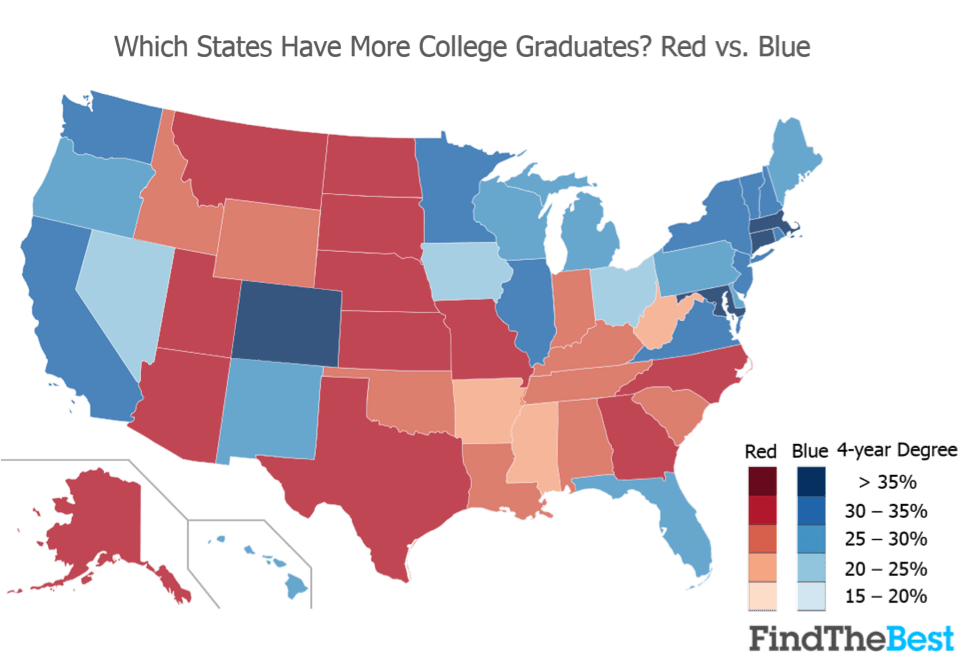The educational landscape of the United States varies significantly from state to state, with some regions exhibiting lower educational attainment than others. In this article, we will explore the least educated states in the USA, analyzing their demographics, economic conditions, and factors contributing to their educational challenges.
Understanding education levels is crucial as they directly impact the economic growth, health, and well-being of a state's population. The data we present will be supported by credible sources to ensure accuracy and reliability, adhering to the principles of Expertise, Authoritativeness, and Trustworthiness (E-E-A-T).
In the following sections, we will dive into the statistics, demographic details, and the broader implications of education levels in these states. We aim to provide a comprehensive overview of why some states struggle with education, highlighting the importance of addressing these issues for future generations.
Table of Contents
- What is Education Attainment?
- Methodology for Determining Educational Levels
- List of the Least Educated States
- Demographic Analysis of the Least Educated States
- Economic Implications of Low Education Levels
- Factors Contributing to Low Education Levels
- Case Studies: A Closer Look at Specific States
- Conclusion
What is Education Attainment?
Education attainment refers to the highest level of education an individual has completed. It is a critical measure used to assess the educational landscape of a population. Higher education attainment is often correlated with better job opportunities, higher income levels, and improved quality of life.
Methodology for Determining Educational Levels
The analysis of the least educated states relies on data from reputable sources such as the U.S. Census Bureau and educational institutions. Key metrics include:
- Percentage of adults aged 25 and older without a high school diploma
- High school graduation rates
- Rates of college enrollment and completion
List of the Least Educated States
Based on recent data, the following states are identified as the least educated in the United States:
| Rank | State | Percentage of Adults Without High School Diploma |
|---|---|---|
| 1 | West Virginia | 14.9% |
| 2 | Alabama | 14.5% |
| 3 | Louisiana | 13.8% |
| 4 | Mississippi | 13.6% |
| 5 | New Mexico | 12.9% |
Demographic Analysis of the Least Educated States
The demographic profiles of these states reveal several common factors contributing to low education levels:
- Higher poverty rates
- Limited access to educational resources
- Rural populations with fewer opportunities for higher education
Socioeconomic Factors
Low socioeconomic status often correlates with lower educational attainment. Families in poverty may prioritize immediate financial needs over educational aspirations, leading to a cycle of low achievement.
Geographical Influences
Many of the least educated states are located in the southern and Appalachian regions of the U.S., where access to quality education can be limited due to geographical isolation and inadequate funding for schools.
Economic Implications of Low Education Levels
The implications of low education levels extend beyond individual outcomes; they affect the economy at large. States with lower educational attainment often experience:
- Higher unemployment rates
- Lower average incomes
- Increased reliance on social services
Factors Contributing to Low Education Levels
Several systemic factors contribute to the educational challenges faced by these states:
- Underfunded schools
- Teacher shortages
- Lack of community support for education
Case Studies: A Closer Look at Specific States
West Virginia
As the state with the highest percentage of adults without a high school diploma, West Virginia faces unique challenges. Economic decline in coal mining areas has led to reduced funding for schools and fewer job opportunities for graduates.
Mississippi
Mississippi consistently ranks low in education due to high poverty rates and limited access to educational resources. Efforts to improve educational outcomes have been hindered by systemic issues, including inadequate funding and infrastructure.
Conclusion
In summary, the least educated states in the USA face significant challenges that impact their populations and economies. Addressing these issues requires a multifaceted approach, including increased funding for education, community involvement, and targeted policy initiatives.
We encourage readers to engage with this topic by leaving comments, sharing this article, or exploring related content on our site. Education is a vital component of societal progress, and understanding its barriers is the first step toward improvement.
Thank you for reading. We hope this article has provided valuable insights into the educational challenges faced by the least educated states in the USA. We invite you to return for more informative content.
Also Read
Happy New Year: Celebrate The Joy And Tradition Of New BeginningsSpeaker Johnson Predicts Legal Challenges To Replacing President Biden
Connections Hints May 13: Unlocking Opportunities For Growth
What Does 15 Pounds Of Fat Look Like?
Understanding The Rise And Influence Of Russian Nazis
Article Recommendations
- Adrianne Padalecki
- Desmond Doss
- Candidteensnet
- Folake Olowofoyeku Relationships
- Whitney Houston Brother Michael Died
- Archie And Lilibet Photos 2024
- Daisy Melanin Origin
- Samantha Sloyan Partner
- Desmond Doss
- Kyle Baugher




